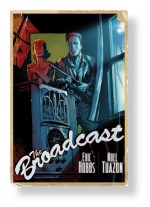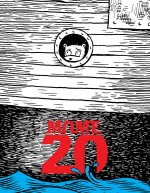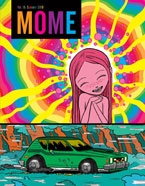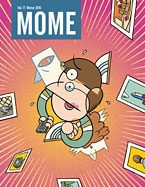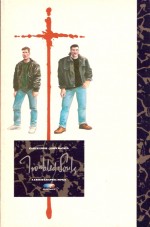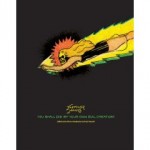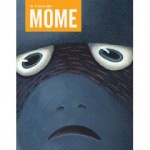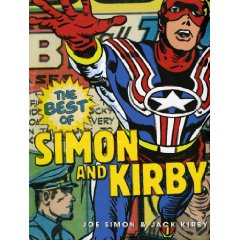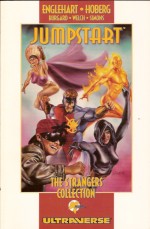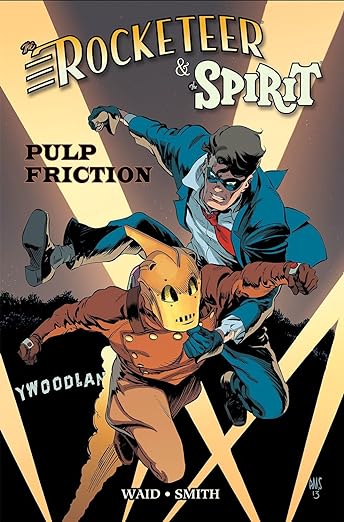
By Mark Waid, Paul Smith, Loston Wallace, J Bone, Bob Wiacek & various (IDW)
ISBN: 978-1-61377-881-4 (HB/Digital edition)
The American comics industry has generated its fair share of immortal heroes. However, whilst everyone is familiar with household names such as Flash Gordon, Superman, Dick Tracy or Popeye, there are also timeless champions who pretty much remain hallowed names only to the in-crowd and cognoscenti: characters who had their shot at global mega-stardom but for some reason never caught on with the masses. Guys like The Spirit and The Rocketeer…
Will Eisner was a pivotal creative force who helped shaped the entire medium of comics. From 1936 to 1938 he worked as a jobbing cartoonist in the studio-stable known as the “Eisner-Eiger Shop”, creating strips for both domestic and foreign markets.
As Willis B. Rensie he created and drew the opening instalments of a huge variety of characters ranging from funny animal to historical sagas, Westerns, Detectives, aviation action thrillers… and superheroes… lots of superheroes.
In 1940, Everett “Busy” Arnold, of Quality Comics, invited Eisner to take on a new challenge. The Register-Tribune newspaper syndicate wanted a 16-page weekly comicbook insert to be given away with the Sunday editions. Eisner created three strips which would initially be handled by him before two were handed off to his talented assistants.
Bob Powell inherited Mr. Mystic whilst distaff detective Lady Luck first fell into the capable hands of Nick Cardy (nee Nicholas Viscardi) and later the inimitable Klaus Nordling.
Eisner kept the lead for himself, and over the next dozen years masked detective The Spirit grew into the most impressive, innovative, imitated and talked-about strip in the business. In 1952, the venture folded and Eisner moved into commercial, instructional and educational comics, working extensively for the US military in manuals and magazines like P*S, the Preventative Maintenance Monthly, and generally left comics books behind.
In the wake of “Batmania” and the 1960s superhero craze, Harvey Comics released two giant-sized reprint editions with some new material from Eisner. These led to a brace of underground compilations and a slow but inexorable rediscovery and revival of the Spirit’s fame and fortune, via black-&-white newsstand reprint magazines.
Warren Publishing collected old stories, occasionally adding painted colour from contemporary luminaries like Rich Corben, but from #17 the title reverted to Kitchen Sink, who had produced those first two underground collections.
Eisner found himself re-enamoured with graphic narrative and discerned that there now existed a willing audience eager for new works. From producing new Spirit covers for the magazine – something the original newspaper insert had never needed – he became increasingly inspired. American comics were evolving into an art-form and the restless creator finally saw a place for the kind of stories he had always wanted to tell.
Eisner subsequently began crafting some of the most telling and impressive work the industry had ever seen: first in limited collector portfolios and, in 1978, with groundbreaking sequential narrative A Contract With God: thereby jumpstarting our modern comics phenomenon of graphic novels…
Although his output was far smaller and life far shorter, Dave Stevens had an equally revolutionary effect on the industry: his lush and lavish illustration style influencing a generation of artists as his signature retro-futurist character The Rocketeer became the first breakout star of the Independent Comics movement that stemmed from the creation of the comic book Direct Sales Market.
Due to Stevens’s legendarily uncompromising artistic vision – and consequent slow page rate – very few of The Rocketeer’s period exploits appeared before the artist’s death from Hairy Cell Leukaemia in 2008. Since then, diverse hands have added to the canon, as with the miniseries collected in this slim but stunning edition.
Just in case these vintage adventurers are new to you, The Spirit used to be Denny Colt: Central City’s greatest detective and criminologist. After apparently dying in battle with a vile master-villain, Colt opted to remain officially dearly departed to battle evil in a semi-official capacity. The masked enigma was covertly aided by girlfriend Ellen Dolan and her father, the Police Commissioner of that crime-ridden metropolis.
Cliff Secord is an itinerant West Coast pilot who – circa 1938 – found a fantastic jetpack outfit and stumbled into a succession of criminal plots and capers. With the eventual permission of the flight engine’s inventor – one of the greatest heroes of that or any other era – Cliff still finds himself regularly battling bad guys as The Rocketeer. When that’s not occupying his time, he’s busy looking for work or being given the run-around by his star-struck, fame-obsessed, trouble-magnet girl Betty…
Team-ups are part-and-parcel of comics and both heroes have had their share of cataclysmic and catastrophic clashes with the valiant giants of the period and the industry. This yarn however – a 4-issue miniseries by Mark Waid originally spanning July to December 2013 – concentrates as much on humour as bombastic action. It begins on the East Coast in February 1941 as business executives and government men meet to decide the future of the Next Big Thing…
Alderman Cunningham is stridently opposed to letting business cartels control the new medium and argues that, just like with radio, public airwaves must not be owned by any individual or corporation seeking to monopolise recently invented Television…
Mere hours later an early morning fashion shoot on a California beach is ruined when beautiful Betty finds the idealistic politician’s mangled corpse. When the stiff is identified as Cunningham, Commissioner Dolan and Spirit are baffled. How could the victim have travelled more than 3000 miles in one night? Determined to investigate, they book passage on a transcontinental plane, having reluctantly crumbled before the forceful Ellen who demands to join them and see Hollywood…
In Los Angeles, Cliff Secord is still ignored by traumatised Betty. He mopes dejectedly until grizzled old mechanic Peevy points out that whoever killed the Alderman might also want to silence the girl who found the body…
Nearby, a very wealthy entrepreneur places a coast-to-coast call to The Spirit’s greatest enemy to discuss his incredible new invention, the pursuance of their plans and how to stop a certain masked interloper from interfering…
Said hero – still wearing his mask – is stiffly staggering off a plane at Chaplin Field with his equally exhausted cross-country companions. In a weary, unguarded moment he mentions Betty. Learning of the “slip”, an already paranoid Cliff panics and, assuming a masked killer has come for his girl, dons his rocket-man suit to attack…
After a spectacular battle, Ellen finally manages to convince both testosterone-soaked mutton heads they are on the same side, and a tentative alliance forms …at least until Spirit interviews Betty and the flighty starlet finds she’s in love – or thereabouts – with the hunky masked cop.
Illustrator Paul Smith gives way to Loston Wallace & Bob Wiacek as chapter two opens with the fractious, clueless allies heading for the LA Morgue and Cunningham’s cadaver. Elsewhere, television wizard Benedict Trask and The Octopus debate how best to get Betty out of the picture and deal with interlopers meddling in their affairs. Their solution is unique and everything would have worked out swell if not for inveterate tinkerer Peevy who has built his own prototype TV receiver and intercepted something he shouldn’t have…
The villains respond in typical manner but their big mistake is believing planes sent to strafe Peevy’s hangar are enough to stop Rocketeer and The Spirit…
With J Bone stepping in for the final two chapters, the high-octane tale ramps up to top gear as Cliff travels to Central City with The Spirit and the Dolans. All they have to do is find Betty, expose Trask and the Octopus’ sinister scheme, uncover their treacherous connections to a certain Fascist foreign power, prevent America’s airwaves being subverted and save President Roosevelt from assassination by television in a rocket-paced, breathtaking rollercoaster ride that delivers non-stop thrills and chills…
Accompanied with an Introduction from Denis Kitchen, filling in all necessary back-story on the characters, and visually embellished by sketches and a large cover gallery by Darwyn Cooke, Smith, Jordie Bellaire, Bone and Chris Samnee, Pulp Friction is a no-nonsense fun-filled frolic to delight lovers of the good old days of Thud and Blunder…
© 2014 The Rocketeer Trust and Will Eisner Studios, Inc. The Rocketeer is a registered trademark of, and all related characters, their distinctive likenesses and indicia are trademarks of The Rocketeer Trust. All Rights Reserved. The Spirit © 2014 Will Eisner Studios, Inc. The Spirit and Will Eisner ™ & © Will Eisner Studios, Inc. ® in the US Patent and Trademark Office. All Rights Reserved.

